Historical and old photos of Fredrikstad, Viken
|
A small historical reference
Geography: Fredrikstad is a city and municipality in Viken county, Norway. The administrative centre of the municipality is the city of Fredrikstad.
The city of Fredrikstad was founded in 1567 by King Frederick II, and established as a municipality on 1 January 1838 (see formannskapsdistrikt). The rural municipality of Glemmen was merged with Fredrikstad on 1 January 1964. The rural municipalities of Borge, Onsøy, Kråkerøy, and Rolvsøy were merged with Fredrikstad on 1 January 1994.
The city straddles the river Glomma where it meets the Skagerrak, about 20 kilometres (12 mi) from the Sweden border. Along with neighboring Sarpsborg, Fredrikstad forms the fifth largest city in Norway: Fredrikstad/Sarpsborg. As of 1 January 2018, according to Statistics Norway, these two municipalities have a total population of 136,117 with 80,977 in Fredrikstad and 55,140 in Sarpsborg.
Fredrikstad was built at the mouth of Glomma as a replacement after Sarpsborg (15 kilometres (9 miles) upstream) was burnt down by the Swedish Army in the 1500s. Some of the citizens stayed behind and rebuilt their old town at its original site and got their city status back in 1839.
The city centre is on the west bank of the Glomma, while the old town on the east bank is Northern Europe's best preserved fortified town.
Fredrikstad used to have a large sawmill industry and was an important harbour for timber export, then later on shipbuilding, until the main yard was closed in 1988. The main industries are currently various chemical plants and other light industry.
In 2005, Fredrikstad was the final host port for the Tall Ships' Race, attracting thousands to the city. In 2019, it was the first host port.
In 2017, Fredrikstad won the national award for most attractive city. The award is given yearly by the Norwegian government on the basis of social, economic and environmental factors.
Date of foundation: 1567
History:
Population: 82 301
Sights:
|
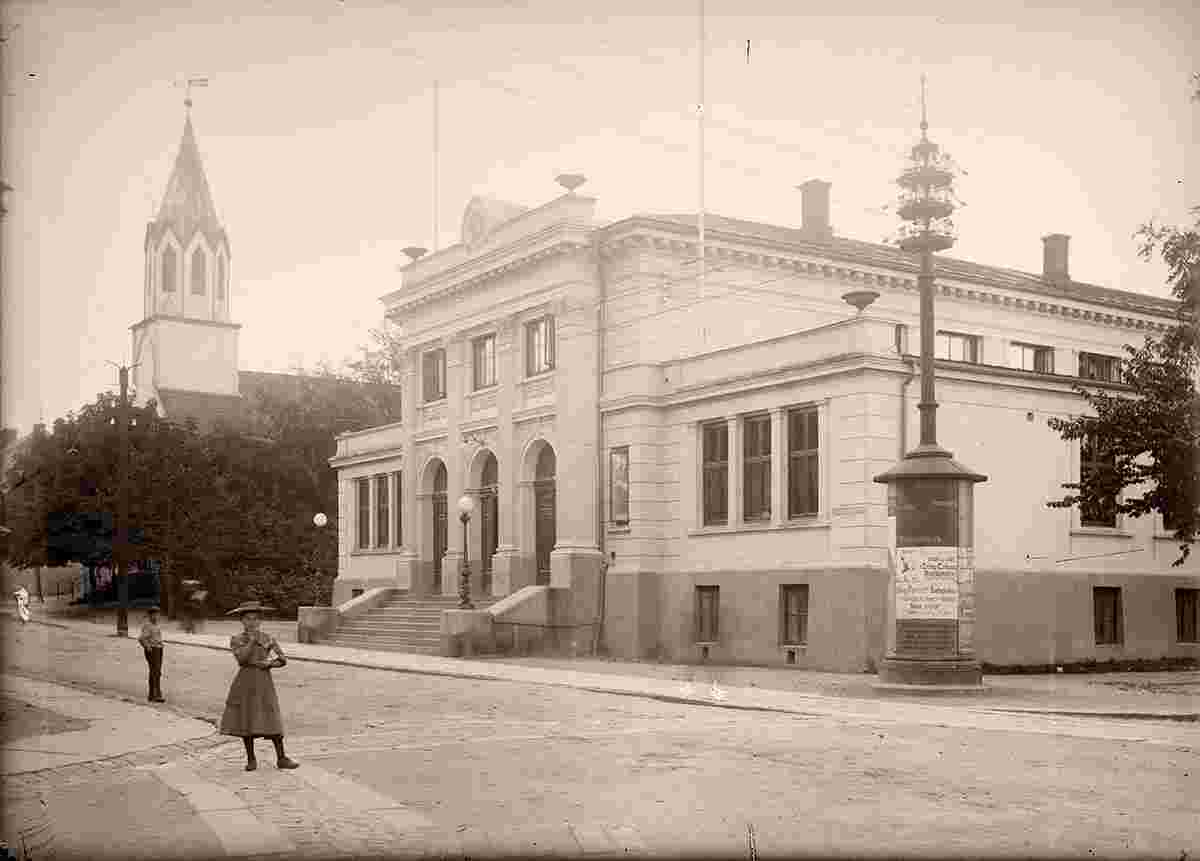
City building, between 1900 and 1925 |

City building, sculpture in fountain, between 1900 and 1950 |
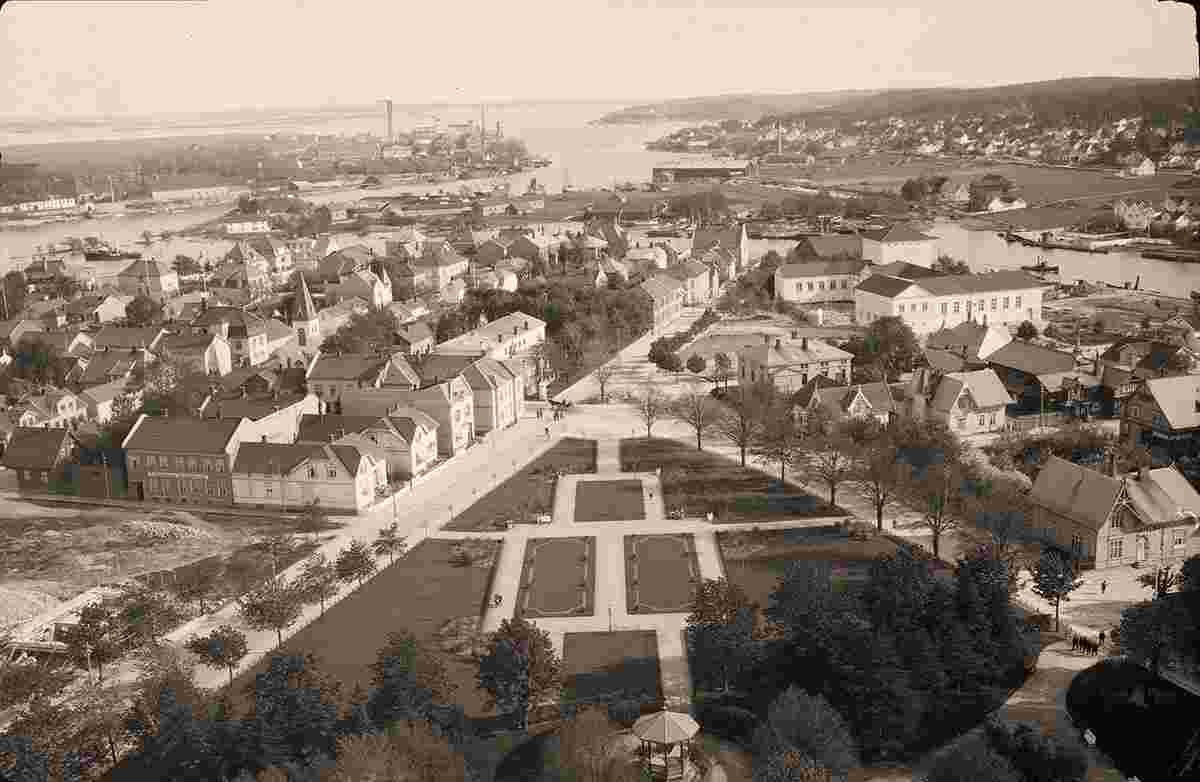
Panorama of the city, between 1900 and 1950 |
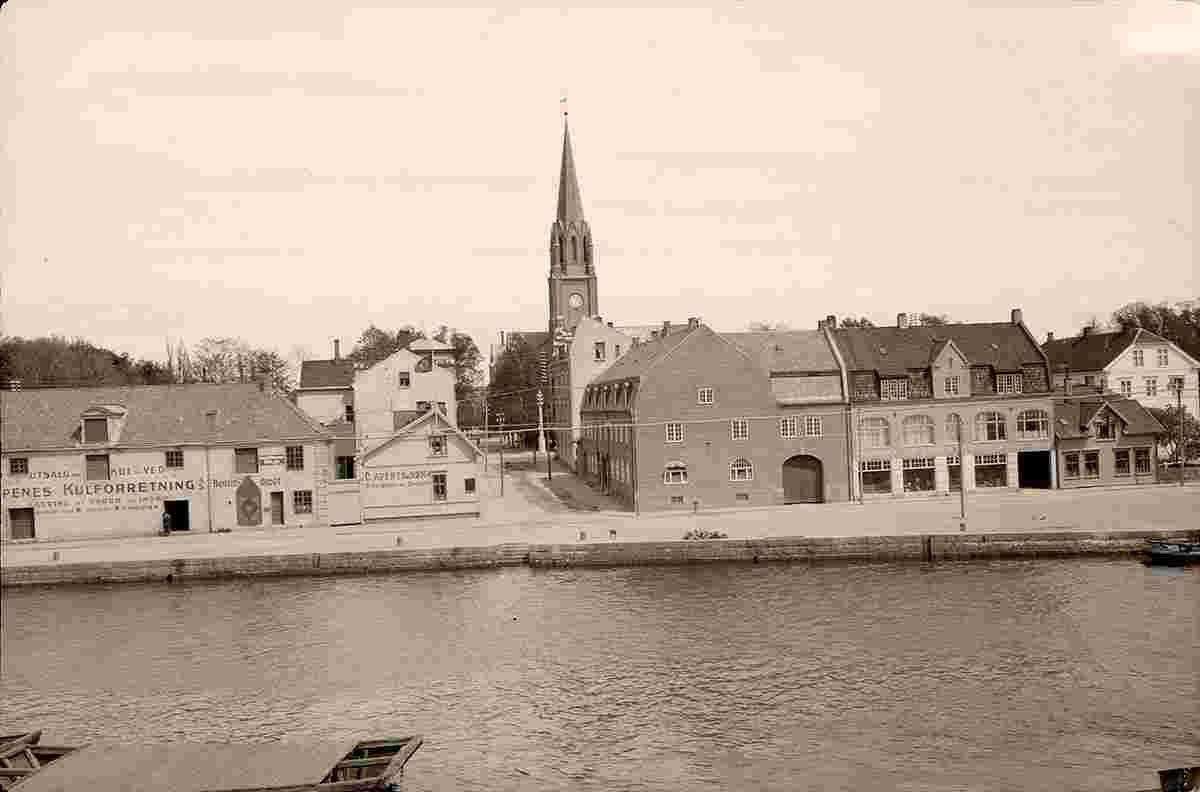
Panorama of the city with church, between 1900 and 1950 |
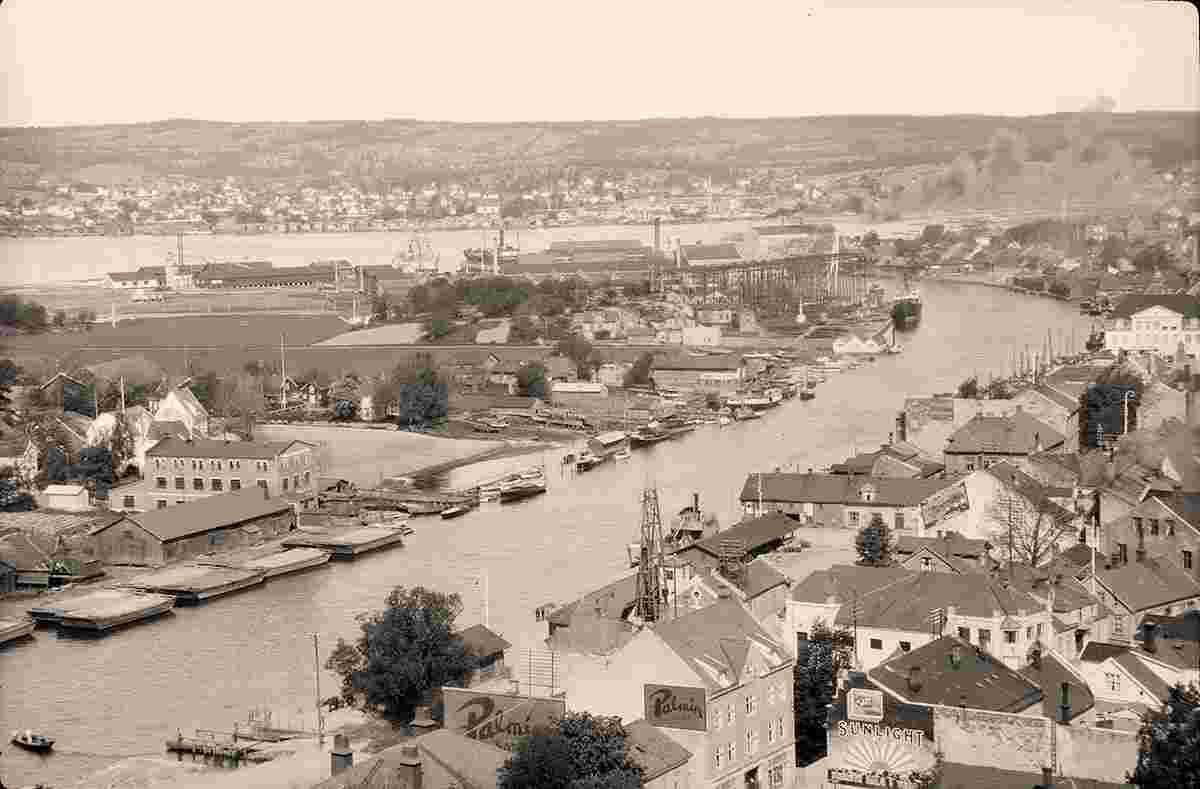
Panorama of the city and Glomma river, between 1900 and 1950 |

Panorama of the city street, between 1940 and 1950 |

Railway station square, between 1900 and 1950 |
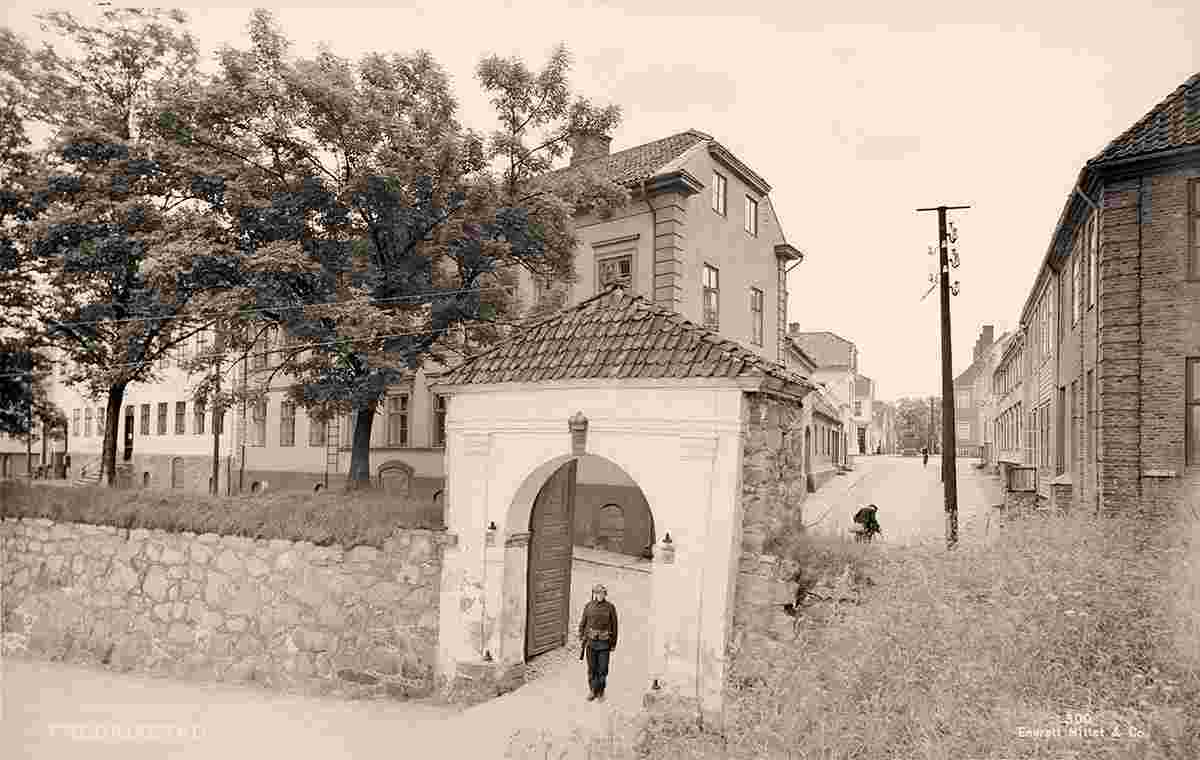
Soldier on city gate, between 1900 and 1950 |
History
After Sarpsborg was burned to the ground during the Northern Seven Years' War, the ruling king, Frederik II of Denmark, decided by royal decree to rebuild the city 15 kilometres (9 mi) south of the original location. This new site's proximity to the sea and the accessible open land surrounding it made it a better location than the old one. The name Fredrikstad was first used in a letter from the King dated 6 February 1569. The temporary fortification built during the Hannibal War (1644–1645) between Sweden and Denmark-Norway, became permanent in the 1660s.
The work on the fortifications was first led by Willem Coucheron and later Johan Caspar von Cicignon. During the next 60 years, several fortifications at the Fredrikstad Fortress were built, including Isegran, Kongsten, and Cicignon. In 1735, a suburb on the western side of Glomma, Vestsiden, was founded. This part later grew faster than the old city, and became the dominant city centre. Most of the buildings in the old city burned down during a fire in 1764.
In the 1840s, timber exporting from Fredrikstad started to gain momentum. In the 1860s, several steam powered saws were built along the river, and in 1879 the railway reached Fredrikstad, leading to further growth. With the decline of the timber exports as a result of the modernization of wood-processing industries in the early 1900s, Fredrikstad's production changed to other types of products. It later became one of Norway's most important industrial centres, famous for its large shipyard, Fredrikstad Mekaniske Verksted.
Origin: en.wikipedia.org
|








